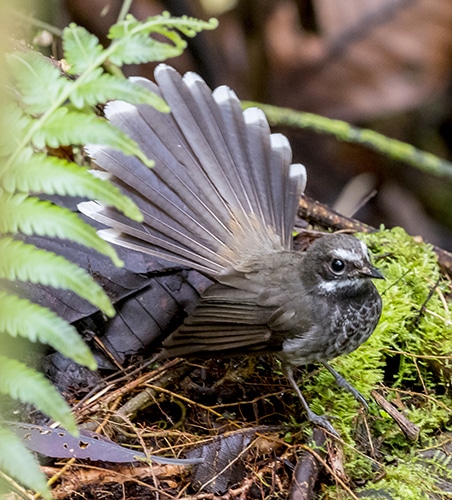Federated States of Micronesia

Birding Micronesia
The Federated States of Micronesia ( also known simply as Micronesia) is an independent sovereign island nation and a United States associated state consisting of four states; from west to east, Yap, Chuuk, Pohnpei and Kosrae that are spread across the Western Pacific Ocean. Together, the states comprise around 607 islands (with a combined land area of approximately 271 square miles that cover a longitudinal distance of almost 1,678 miles just north of the equator. They lie northeast of New Guinea, south of Guam and the Marianas, west of Nauru and the Marshall Islands, east of Palau and the Philippines, about 1,800 miles north of eastern Australia and nearly 2,500 miles southwest of the main islands of Hawaii. The capital is Palikir, located on Pohnpei Island, while the largest city is Weno, located in the Chuuk Atoll. Each of its four states is centered on one or more main high islands, and all but Kosrae include numerous outlying atolls. The Federated States of Micronesia is spread across part of the Caroline Islands in the wider region of Micronesia, which consists of thousands of small islands divided among several countries. The term Micronesia may refer to the Federated States or to the region as a whole. The FSM offers an amazingly diverse range of natural ecosystems, from the world’s lowest elevation cloud forests, tropical rain forests, agro-forests, freshwater ‘Redwood’ wetlands, giant taro swamps, large and varied mangrove tracts, to some of the world’s most pristine coral reefs, sea-grass meadows and estuaries and lagoons. The islands are blessed with many indigenous bird species: the Nightingale Reed-warbler, the Truk Monarch, the Blue-faced Parrot Finch, the Pohnpei Lori and the Kosrae Greater White-eye, to name just a few. The island of Chuuk in particular has become a focus for world birders.
-
Wikipedia
GNU Free Documentation License
http://en.wikipedia.org/wiki/Micronesia
-
2011 [06 June] - Ross Silcock
Report…We decided to go around the island to its north side and walk up a trail to the site of a WW2 Japanese gun emplacement. On our way down we found a Palau Monarch, another endemic- a small flycatcher… -
2012 [01 January] - Chris Doughty
PDF Report…Highlights of our island hopping journey were many and varied and included such remote and difficult to find endemics as Micronesian Scrubfowl, Palau Ground-Dove, Mariana Crow, Nightingale Reed-Warbler and Truk, Olive and Long-billed White eyes…. -
2016 [04 April] - Pete Morris - Micronesia
PDF Report...After a fairly short night’s sleep, we took it easy on our frst day on Yap, essentially taking the frstmorning off. After lunch, we explored an area of semi-natural forest, where we began to pick up ourfrst endemics. Plain White-eyes were particularly common, our frst Yap Monarchs showed well andthe local form of Rufous Fantail obliged. The frst glimpses of ground doves were less than satisfactorythough.... -
2019 [04 2019] - János Oláh
PDF ReportThis was our fifth tour to explore some of the more remote areas of the Western Pacific. We were pioneers with our first tour back in 2008 and even nowadays very few birders visit Micronesia on such a thorough basis as we do! Virtually no other birding companies offer such a comprehensive tour to this remote corner of the World, especially now as we supplemented the main tour with a short extension to Kosrae – following the splitting of Kosrae Frui-dove and Kosrae White-eye.
-
Birding Pohnpei
WebsiteWith seven species of birds found nowhere else on earth and another nine unique to the Micronesian region, Pohnpei has developed a special place in the hearts of international birders. On this page, we’ve included information about all the target species and where you might find them, as well as providing suggestions about where to book tours, hire guides, or get additional assistance. Precise topographic hiking maps and information about “hotspot” birding locations on Pohnpei can (or will) be found in all of the eco-adventure map guides. -
Checklist
Website
